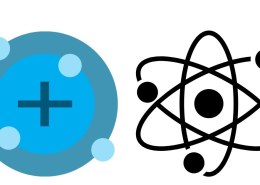The number of protons in one atom of an element is a fundamental property of that element and is known as its atomic number. Here’s a detailed breakdown:
1. What are Protons?
Protons are subatomic particles found in the nucleus (center) of an atom. They carry a positive electric charge (+1) and, together with neutrons, make up most of the atom’s mass.
2. Atomic Number and Protons
The atomic number (denoted as Z) is the number of protons in the nucleus of an atom of an element. It uniquely identifies each chemical element. For example:
- Hydrogen (H) has an atomic number of 1, meaning it has 1 proton in its nucleus.
- Carbon (C) has an atomic number of 6, meaning it has 6 protons in its nucleus.
- Oxygen (O) has an atomic number of 8, meaning it has 8 protons in its nucleus.
3. Why is the Number of Protons Important?
- Element Identity: The number of protons determines the element. For example, if an atom has 6 protons, it is always carbon, regardless of how many neutrons or electrons it has. Changing the number of protons changes the element itself (e.g., if you change a proton in carbon, it becomes nitrogen).
- Chemical Behavior: The number of protons influences the arrangement of electrons around the nucleus, which in turn affects how the atom bonds with other atoms and behaves in chemical reactions. This is why elements in the same group or column of the periodic table often share similar chemical properties.
- Isotopes: Atoms of the same element can have different numbers of neutrons, resulting in isotopes. For instance, carbon has isotopes like carbon-12 (with 6 protons and 6 neutrons) and carbon-14 (with 6 protons and 8 neutrons), but both are still carbon because they have the same number of protons.
4. How to Find the Number of Protons in an Element
- The atomic number is typically listed on the periodic table. For example, the element oxygen (O) has an atomic number of 8, so it has 8 protons.
- The atomic number is always an integer and is unique to each element. It is the same as the number of electrons in a neutral atom, ensuring electrical neutrality.
5. Example of Different Elements:
Here are a few examples showing the atomic number and the number of protons in different elements:
- Hydrogen (H): Atomic number 1 → 1 proton
- Helium (He): Atomic number 2 → 2 protons
- Lithium (Li): Atomic number 3 → 3 protons
- Oxygen (O): Atomic number 8 → 8 protons
- Iron (Fe): Atomic number 26 → 26 protons
- Uranium (U): Atomic number 92 → 92 protons
Conclusion
The number of protons in an atom directly corresponds to its atomic number, which is a defining characteristic of the element. Understanding the atomic number and the number of protons helps you understand an element’s identity, properties, and how it will interact with other elements in chemical reactions.

